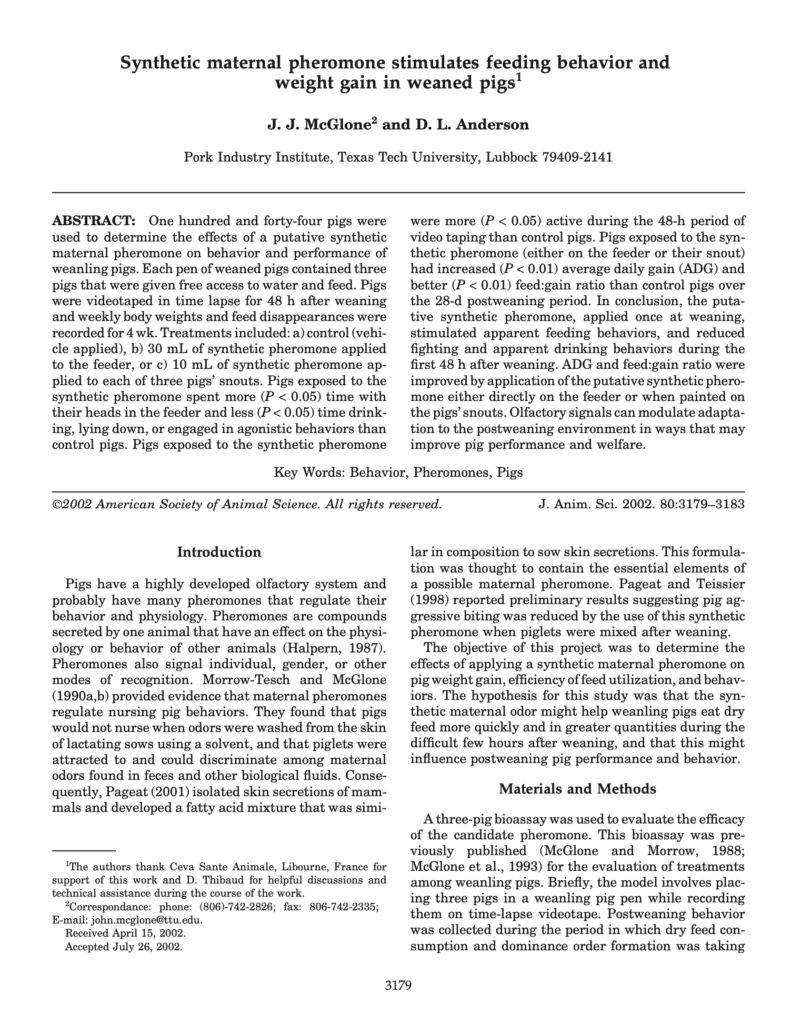Abstract:
One hundred and forty-four pigs were used to determine the effects of a putative synthetic maternal pheromone on behavior and performance of weanling pigs. Each pen of weaned pigs contained three pigs that were given free access to water and feed. Pigs were videotaped in time lapse for 48 h after weaning and weekly body weights and feed disappearances were recorded for 4 wk. Treatments included: a) control (vehi- cle applied), b) 30 mL of synthetic pheromone applied to the feeder, or c) 10 mL of synthetic pheromone ap- plied to each of three pigs’ snouts. Pigs exposed to the synthetic pheromone spent more (P < 0.05) time with their heads in the feeder and less (P < 0.05) time drink- ing, lying down, or engaged in agonistic behaviors than control pigs. Pigs exposed to the synthetic pheromone
were more (P < 0.05) active during the 48-h period of video taping than control pigs. Pigs exposed to the syn- thetic pheromone (either on the feeder or their snout) had increased (P < 0.01) average daily gain (ADG) and better (P < 0.01) feed:gain ratio than control pigs over the 28-d postweaning period. In conclusion, the puta- tive synthetic pheromone, applied once at weaning, stimulated apparent feeding behaviors, and reduced fighting and apparent drinking behaviors during the first 48 h after weaning. ADG and feed:gain ratio were improved by application of the putative synthetic phero- mone either directly on the feeder or when painted on the pigs’ snouts. Olfactory signals can modulate adapta- tion to the postweaning environment in ways that may improve pig performance and welfare.
Auteur: J. J. McGlone and D. L. Anderson
En savoir plus: https://pubmed.ncbi.nlm.nih.gov/12542158/

